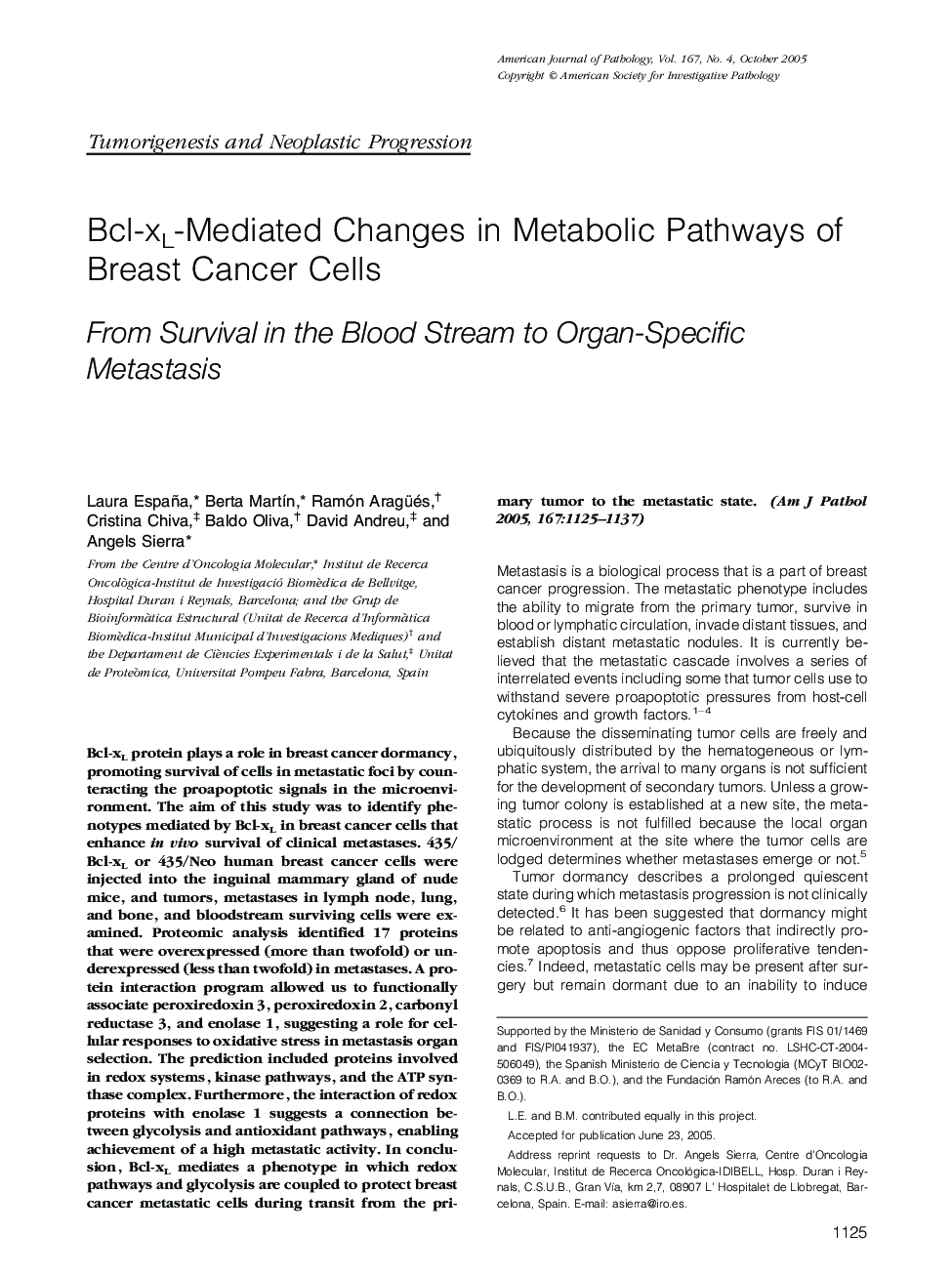| Article ID | Journal | Published Year | Pages | File Type |
|---|---|---|---|---|
| 9943247 | The American Journal of Pathology | 2005 | 13 Pages |
Abstract
Bcl-xL protein plays a role in breast cancer dormancy, promoting survival of cells in metastatic foci by counteracting the proapoptotic signals in the microenvironment. The aim of this study was to identify phenotypes mediated by Bcl-xL in breast cancer cells that enhance in vivo survival of clinical metastases. 435/Bcl-xL or 435/Neo human breast cancer cells were injected into the inguinal mammary gland of nude mice, and tumors, metastases in lymph node, lung, and bone, and bloodstream surviving cells were examined. Proteomic analysis identified 17 proteins that were overexpressed (more than twofold) or underexpressed (less than twofold) in metastases. A protein interaction program allowed us to functionally associate peroxiredoxin 3, peroxiredoxin 2, carbonyl reductase 3, and enolase 1, suggesting a role for cellular responses to oxidative stress in metastasis organ selection. The prediction included proteins involved in redox systems, kinase pathways, and the ATP synthase complex. Furthermore, the interaction of redox proteins with enolase 1 suggests a connection between glycolysis and antioxidant pathways, enabling achievement of a high metastatic activity. In conclusion, Bcl-xL mediates a phenotype in which redox pathways and glycolysis are coupled to protect breast cancer metastatic cells during transit from the primary tumor to the metastatic state.
Related Topics
Health Sciences
Medicine and Dentistry
Cardiology and Cardiovascular Medicine
Authors
Laura España, Berta MartÃn, Ramón Aragüés, Cristina Chiva, Baldo Oliva, David Andreu, Angels Sierra,
